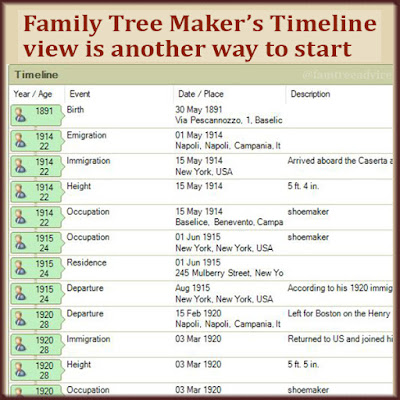I gave birth to my first child on my mother's birthday. I had my second child on my grandmother's birthday, and last week he had his first child on his own birthday.
While sitting in the maternity waiting room, I saw a stack of local newspapers on the table. That reminded me of something a relative said when I had my firstborn in 1989. She said I should save a newspaper to commemorate what was happening in the world on that date. The big story I remember was the demonstrations and massacre in Tiananmen Square. That story made the front page when my son came along and continued into the next month.
 |
| If you don't have a time machine at your disposal, here's a great way to add historical context to your family tree. |
Your Date in History
There is a website you can use to find out interesting tidbits about any date in your family tree. It's History.com. Go to https://www.history.com/this-day-in-history, and it will default to today's date. Next to the page's headline, "This Day in History", there is a square with today's month and date. You can change that to any month and date you choose.
When you choose a date, you'll see:
- a top story from that date
- a short list of famous people born on that date
- a fact of the day
- a timeline of key events in history (along with a video summary)
This can be a lot of fun. For instance, my father shares his birthday with Bruce Willis, Glenn Close, and Wyatt Earp. My mother and first son share their birthday with Willie Mays, Orson Welles, and Sigmund Freud. Plus, the Hindenburg disaster happened on that date when mom was a little girl.
You can click each event in the timeline to read more about it.
When I put in my birthday I see:
- The United States established the first Supreme Court in 1789.
- I share my birthday with F. Scott Fitzgerald, Jim Henson, and John Marshall. He was the fourth Chief Justice of the United States.
- President Teddy Roosevelt proclaimed the country's first national monument. It was Devils Tower as seen in "Close Encounters of the Third Kind".
- The timeline of events on this date includes:
- the incorporation of the Honda Motor Company
- the delivery of the Warren Commission report to President Johnson
- the first episode of "60 Minutes"
 |
| Was your ancestors' wedding date historically significant? Did something special happen on your birth date? This website gives you the full story for your family tree. |
Since the owners of history.com are in the United States, you may see more U.S. history results than you want. But there's so much more to explore. Look at the second-line menu at the top of the web page. You can choose "World" or "Eras & Ages" to find content that can add context to your family tree.
Choose any item from those lists (or the U.S. list) to find a host of articles and videos that will interest you. You can also use the search area to search for anything you like. (Look for the magnifying glass near the top right corner of the web page.) I decided to look into the Boston Tea Party, which happened on this date (16 Dec) in 1773. The short article includes links to more information, and a short video.
Today's History Channel features programs about aliens, ghosts, and weirdos with odd jobs. But years ago, I admired them for their well-produced, engaging story telling. These video clips put their true professionalism on display.
Which generation of ancestors in your family tree need more historical context? If History.com has the content, you're sure to enjoy the learning experience.


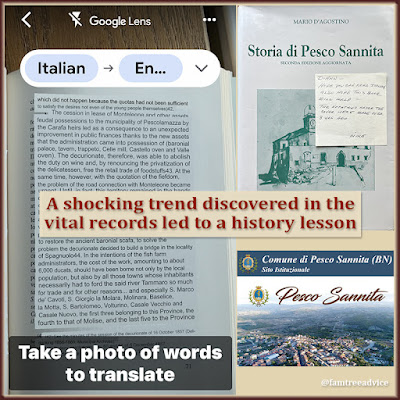
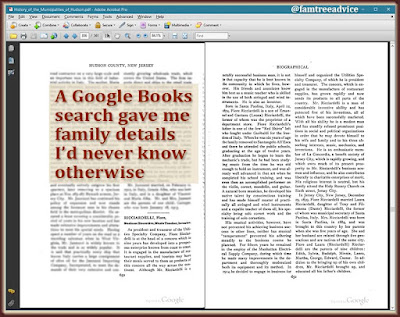


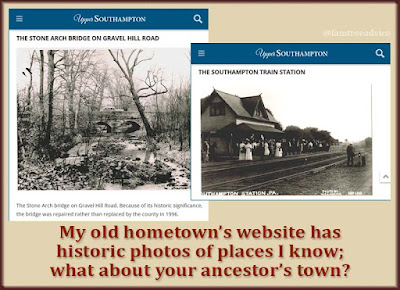



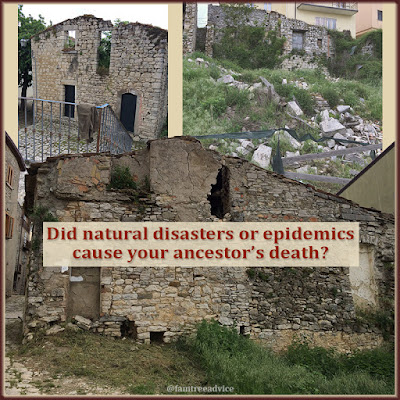

![I get angry when my seat on an airplane is too cramped. My poor ancestors rode in the belly of one of these. I get angry when my seat on an airplane is too cramped. My poor ancestors rode in the belly of one of these. ... Ancestry.com. New York Port, Ship Images, 1851-1891 [database online]. Provo, Utah: MyFamily.com, Inc., 2004. Original data: Ship images obtained from and reproduced courtesy of Mystic Seaport.](https://blogger.googleusercontent.com/img/b/R29vZ2xl/AVvXsEjrXM3ChMWg4WfEZpcqoi05bTQd5lSKLcseicXO345jpmMZtVS31qAIUhNTbnAtbVVq9dklCiSuDbwH3L1pBupNXfJikq8kpIdxw71_KKUd_7g0solx2WMTs8j28SLvIfNGzku04s_40Eg/w400-h301/073019-ship.jpg)



